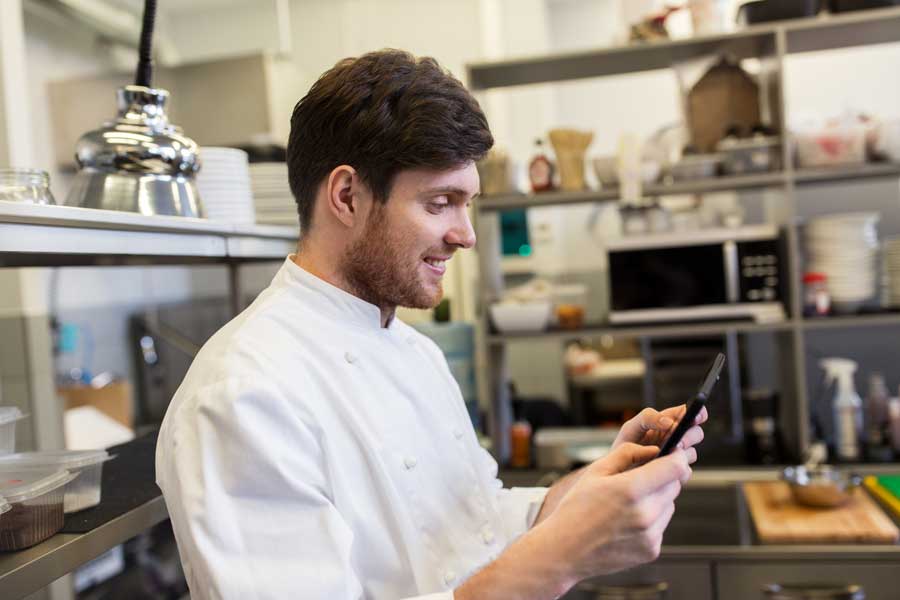F&B management in the digital era with gstock

Maybe when you read the title of the article I am sharing with you this week you thought, what difference does it make? Using digital tools is already digitizing, isn't it? No, it isn't. Even if only digital tools are involved from the moment the waiter of your F&B business presses the POS button to mark the bottle of water ordered by the customer until that bottle ends up in the corresponding accounting entry, if all these tasks are not digitally linked to each other we can not talk about digitization of management.
The most common problem when it comes to digitizing food and beverage management is that most professionals do it by solving small problems separately and not seeing them as a whole, as a big problem that requires a big solution to solve it. This change of mentality is very important for success. Helping you to choose a digitization route that is all highway, from start to finish, is the objective of the articles and the podcast that I have been sharing with you for a few months now.
Because if that route is not complete, it is not real digitization. This is very, very important.
Digitizing tasks vs. digitizing management
Knowing how to differentiate between digitizing tasks and digitizing management makes the difference. Actions such as sending a whatsapp or an email are not what we mean by digitizing. These are digital actions in origin, yes, but above all actions that are understood as individual tasks. When I talk about digitizing, what I am talking about is digitizing management so that all back office tasks are digital and digitally connected.
Using digital tools means building sections of the digital highway. But if they are not linked together, if some tools are not integrated with others within a coherent and customized flowchart for the needs of your business, we cannot speak of digitalization of management. We will have sections, but not the highway.
In this sense, a note about the flowchart: it must be a living resource. It will change as new needs arise or new tools that better solve the needs we already have.
When we talked about the main mistakes in the process of digitizing food and beverage management we already saw that, with the proliferation of digital tools and the extension of their use - without proper training in many cases - it is very easy to confuse analog with digital. To be clear, an example that we have all seen and many still do: downloading an excel on the computer to send it to another colleague is not digitizing, but a manual work that we do with a digital tool.
No matter how much the tasks are done with digital tools, if the whole process - the highway - is not, we are not talking about digitizing.
The digital tools market has become a very dense forest that leaves F&B entrepreneurs in situations where they really don't know where to start. Today we can hire programs in the cloud - what we understand as digital programs - that offer a very large integration with the rest of the applications we have, want or plan to have and, thanks to the development of tools and applications, we can now solve small problems with digital solutions, something that helps us a lot in the task of digitizing management.
But what happens if a task is not linked to the next one and we have to download it in an excel or pdf file, write it by hand and type it again in another program to continue processing this information? Well, what happens is the same as when you used to go from Madrid to Galicia, constantly changing roads: neither then there was a highway for the car nor now you have a digital highway for the management of your business. No more, no less.
In order to build it and not just use digital tools for the sake of it, because that is the trend, we must select which applications are going to help us along this path, check that they are integrated with each other - when necessary - and, above all, not leave stretches of dirt road in the middle - that is, undigitized tasks - because otherwise, the process will be incomplete, it will not be real.
Leveraging specialization to better digitize
Digitizing all management in a connected process does not mean using the same solution for everything.
We are in the age of specialization and integration: there are many tools on the market that specialize in one task and are well integrated, allowing us to choose the best solution for each need. The best applications for each need are not to be found under any one 'suite', just look at the example worldwide where leading solutions - reservation books, visualization tools, accounting programs - are 100% independent, agnostic and can be integrated via API. And by always being clear about the business flows, we will have an exact idea of the integrations that will move our management towards a connected digital process.
I end with a reflection: digitization is achieved by dedicating time and resources, both economic and human. With prior planning, business analysis, identification of needs and assessment of the digital tool that will help you solve them. The result must be an integrated, digital process from start to finish. Only in this way we will be digitizing management and not a mere selection of tasks.